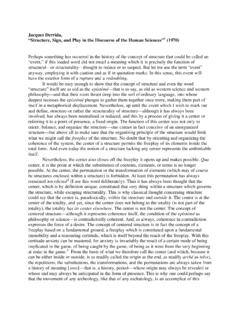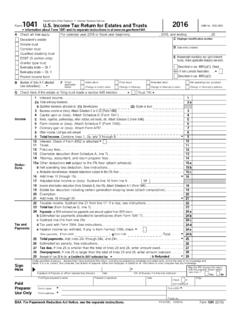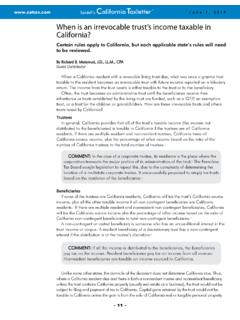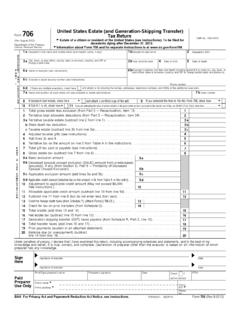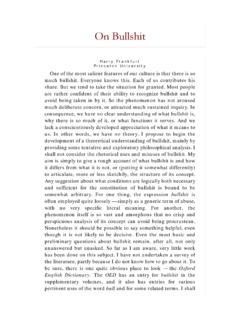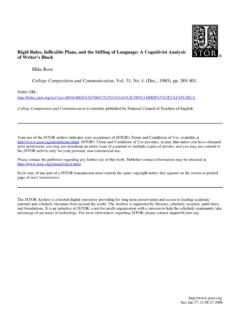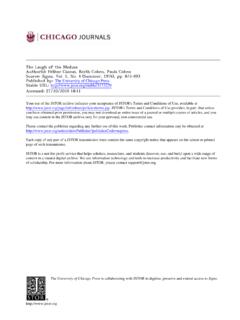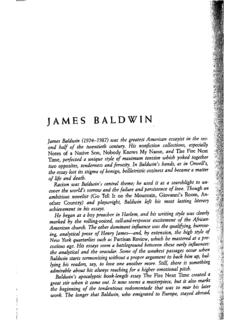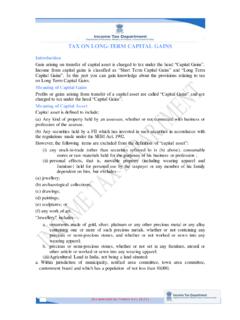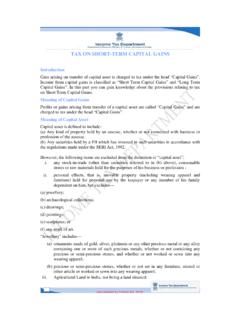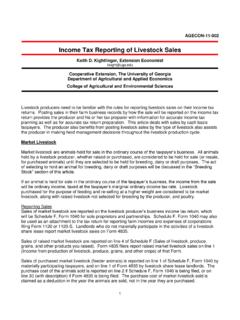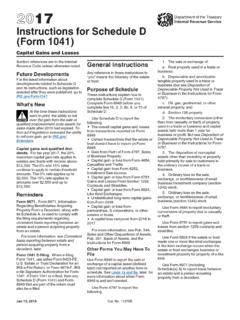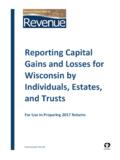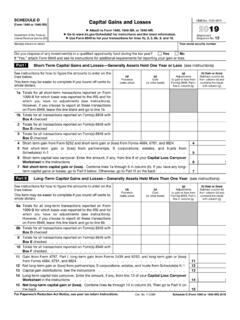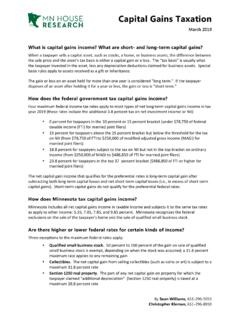Transcription of Can a trust distribute capital gains to the income ...
1 - 3 -PLANNERE lder Client APRIL 1, 2014 However, investment dollars have to at least keep pace with inflation. If an investor wants a higher return, the investor has to take some , in the last 10 years the annualized return of the G Fund was , which outpaced the inflation rate of over the same period. The G Fund paid in 2010, in 2011, and in 2012. Although 2012 was the worst year for the G Fund in the last 10 years, it still outpaced bank accounts, the only other investment that provides government investors may find that they like the advantages of their myRA accounts. In that case, they can circumvent the $15,000 by making regular rollovers from their myRA account to a regular Roth account, thereby continuously staying under the $15,000 The Role of IRAs in Households Savings for Retirement, 2013 (November 2013) ICI Research Perspective.
2 V. 19, n. 11. p. 3 Can a trust distribute capital gains to the income beneficiary?TAX: For trusts, the capital gains rate is reached at $11,950 in Richard Malamud, , CPA, ContributorTaxation of fiduciary income (for estates and trusts) is probably the least understood area of tax law. Complications abound, and for most tax professionals who prepare very few returns with Form 1041, income Tax Return for Estates and Trusts, there are probably a lot of questions and, unfortunately, not a lot of answers. In fact, there are very few books or articles on the subject. One of the major problems is the accounting issue of what is principal and what is income . Paying the tax Who pays tax on trust income charged to principal?
3 Beneficiaries are taxed on the income received (or required to be distributed to them), but limited by a tax concept known as distributable net income (DNI). In most cases, DNI does not include capital gains . Therefore, capital gains are usually taxed to the trust . Unfortunately, trust tax rates on long -term capital gains have a very narrow 0% and 15% bracket. gains in excess of $11,950 in 2013 are taxed at 20%, plus the Medicare tax. The 20% rate is not reached for individuals until $400,000 (single) and $450,000 (married filing joint), and the tax does not apply until $200,000/$250,000 of AGI. So trapping capital gains in the trust will often increase the intra-family taxes.
4 When are capital gains passed to beneficiaries?Under what circumstances can the fiduciary pass the capital gains through to the income beneficiary? It can be done only if the capital gain income can be included in DNI as described in Treas. Regs. (a)-(3), effective for tax years ending after January 2, 2004. The regulations state that capital gains are properly included in DNI to the extent that the governing instrument and applicable law, or by a reasonable and impartial exercise of discretion by the fiduciary, to income ; to corpus but treated consistently by the fiduciary on the trust s books, records,and tax returns as part of a distribution to a beneficiary; or119- 4 -PLANNERE lder Client APRIL 1, 20143.
5 Allocated to corpus but actually distributed to the beneficiary or utilized by the fiduciary in determining the amount distributed or required to be distributed to the practitioners assume (properly) that in a plain vanilla trust and under most state laws, capital gains usually are not included in fiduciary accounting income or DNI, so it is unlikely in a plain vanilla trust for capital gains to be included in income or DNI for item 1. The best bet for including capital gains in DNI is either to find specific fiduciary discretion in the trust or to work with items 2 or question becomes, does the trust allow the fiduciary to allocate capital gains to trust income for either accounting or tax purposes?
6 Because most state laws are derived from the Uniform Principal and income Act (UPIA) and most states have adopted the Prudent Investors Act, any discretion provided by the trust or state law require the fiduciary to make impartial decisions, not ones based solely on the tax terms overridingIn making allocations between income and principal, the trust terms override UPIA. If the trust is silent on the fiduciary s discretion, UPIA rules govern those decisions, but those rules don t cover all fact patterns. If UPIA and the trust are silent, disbursements must be allocated to principal. A typical trust provision granting the trustee the discretion to allocate items to income and principal probably won t be sufficient alone to allow for unreasonable allocations solely for tax course, if the trust restricts discretion or the beneficiary s distribution is limited to accounting income , it will not be possible to include capital gains in DNI.
7 On the odd chance that the trust provides that the beneficiary is to receive one-half of any capital gains , or if the fiduciary determines that capital gains are in whole or in part charged to income , that income should be included in DNI and taxed to the more difficult situation is where either the beneficiary receives a fixed amount each year, which exceeds the year s accounting income , or the trustee makes discretionary distributions in excess of the ordinary trust income and the trust has realized a capital gain for the year. Can those fact patterns fit within either of the last two alternatives so that the capital gains can be taxed to the income beneficiary?Examples in regulationsThe regulations provide several examples.
8 In the first example, the trustee can invade principal for the beneficiary. During the first year, there is $5,000 of dividend income and $10,000 of capital gains which the trustee allocates to principal. The trustee distributes the $5,000 of income and also distributes $12,000 more to the beneficiary but does not charge that to the capital gain . The regulations conclude that the gain cannot be charged to DNI and therefore it is taxed to the trust and not the trust tax ratesTrust s Taxable IncomeIncome TaxLong-Term capital GainFromTo$0$2,45015%0%$2,450$5,70025%15 %$5,700$8,75028%15%$8,750$11,95033%15%Mo re than $11, 5 -PLANNERE lder Client APRIL 1, 2014In the next example, the facts are the same, but the trustee intends to follow a regular practice of treating discretionary distributions of principal as being paid first from any net capital gains by the trust during the year.
9 The trustee provides evidence of this, according to the regulations, by including the $10,000 of gain in DNI. The regulation concludes that this is a reasonable exercise of the trustee s discretion and it concludes that this treatment must continue in future years for all discretionary If, given the same facts, the governing instrument provides that capital gains are charged to income (and that is not prohibited by state law), then the gain can be charged to income and therefore Suppose under the terms of a trust , the sole asset is to be held for 10 years and then sold and the trust terminated by distributing the proceeds to beneficiary A. Because the amount of the proceeds determines the amount to be distributed to A, the gain is included in If instead A is to receive half the trust at age 35 and half the assets are sold in order to make that distribution, that gain is included in If all the stock were sold and the trustee had discretion to determine the extent to which capital gains are distributed to A, then the trustee may treat the distribution as being all of the gain or a portion of the gain and the rest a distribution of the basis.
10 If the trustee is not given discretion, then one-half of the gain is included in unrelated to capital gainIt is unfortunate that the most common fact pattern, a simple trust such as a QTIP trust that also distributes additional income , is not addressed by the regulations. In that case, the excess distribution has no relationship to the capital gains as it is usually measured by the ascertainable standard of the health, support, education, or maintenance of the beneficiary. Can this distribution be considered a distribution of capital gains under items 2 or 3 of the regulations? Is it enough for the fiduciary to allocate the capital gains to corpus while treating it on the trust s books and records and on the trust s tax returns as part of a distribution to a beneficiary when the amount the beneficiary gets is unrelated to the capital gain ?
